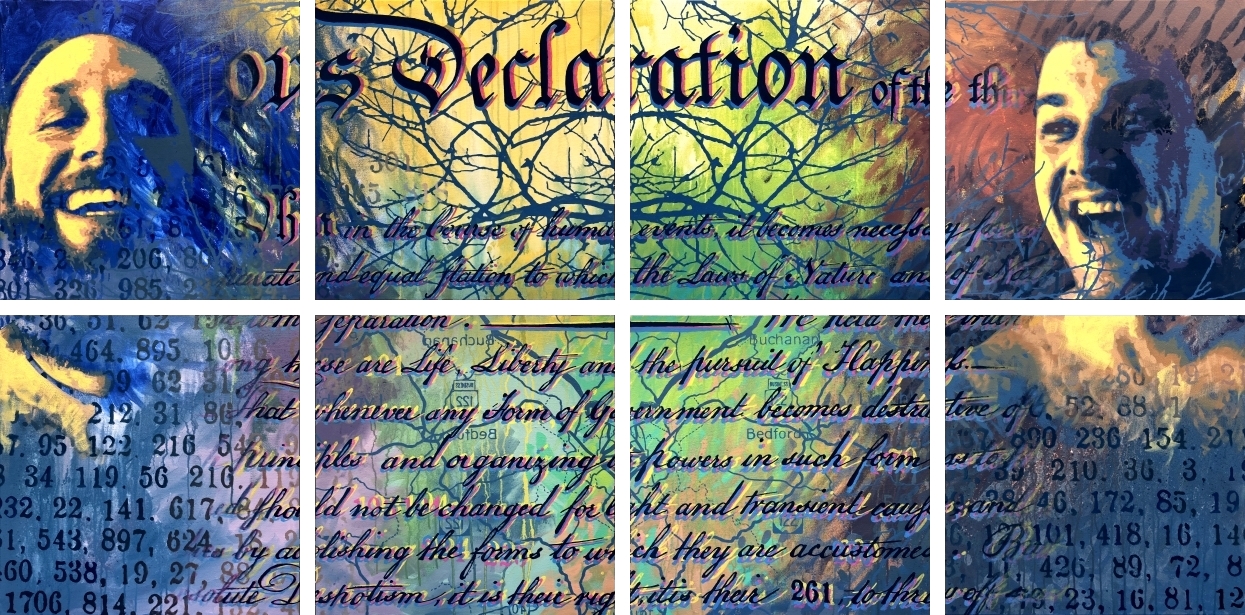| Gold Digger is a cryptographic monument—an immersive meditation on the Beale ciphers, three encrypted texts published in 1885 that allegedly reveal the location of a buried treasure in Bedford County, Virginia. Only the second cipher has ever been “solved,” using the Declaration of Independence as its key. The other two remain unreadable, spawning centuries of obsession, speculation, and myth-making.
At the center of the canvas, the Declaration of Independence anchors the composition—its lower lines overlaid or replaced by the numeric sequence from the second Beale cipher. It is both key and illusion: a foundational text turned into a cryptographic scaffold.
Flanking the Declaration are two laughing faces, representing the first and third ciphers. Unsolved and mocking, they echo a recurring motif in Jenkins’ Secret Codes series: the cruel humor of mysteries that refuse resolution. Their expressions suggest not joy, but epistemological defiance.
Beneath the surface lies a mirrored and distorted map of Bedford, Virginia, abstracted into visual disorientation. Like earlier works in the series, the geography resists navigation—turning place into puzzle. Above, mirrored tree branches create a canopy of confusion, a visual static that blurs orientation.
Fading beneath the laughing figures, the actual Beale ciphers emerge—embedded in the canvas like buried text, resisting translation. They are not presented for decoding, but for contemplation. The treasure may be literal, fabricated, or allegorical. The codes may be solvable or designed to remain opaque.
Gold Digger doesn’t chase resolution. It interrogates the chase itself. A cipher about ciphers. A map without destination. A vault without key.
|

